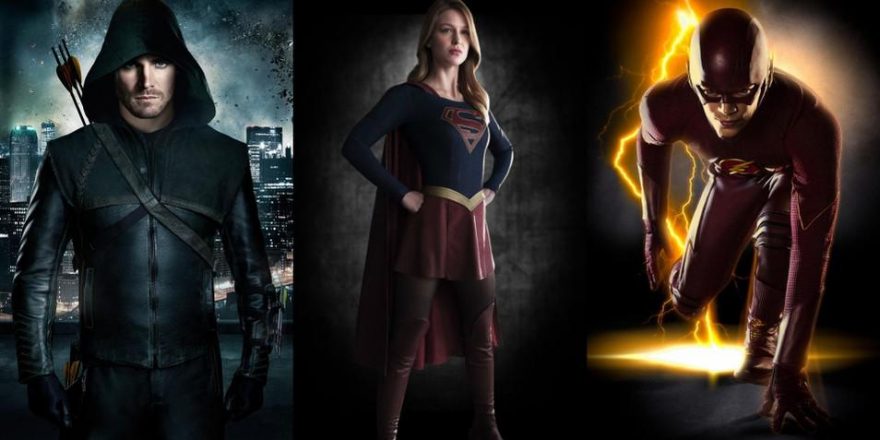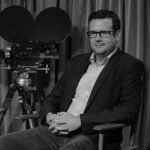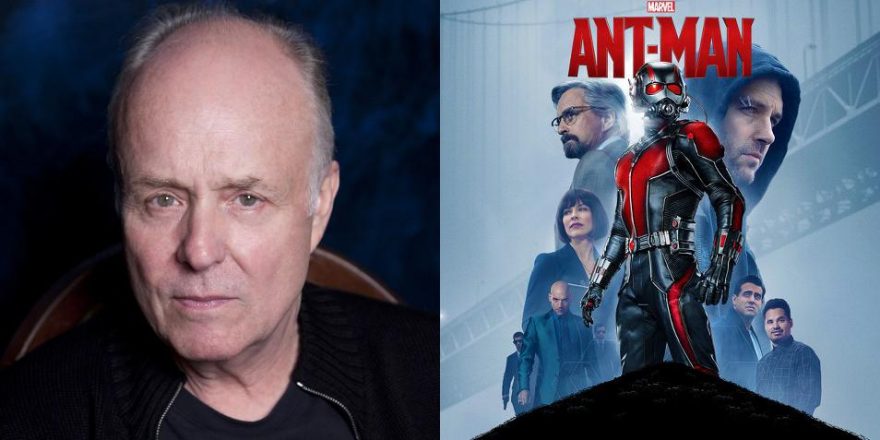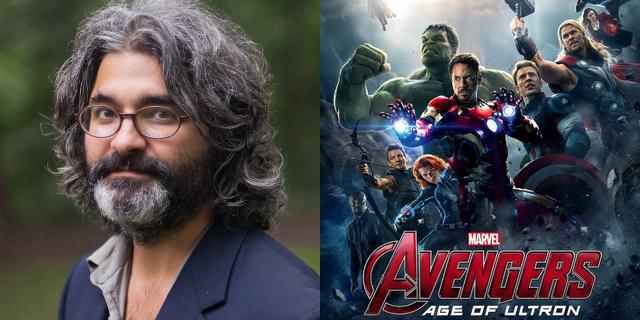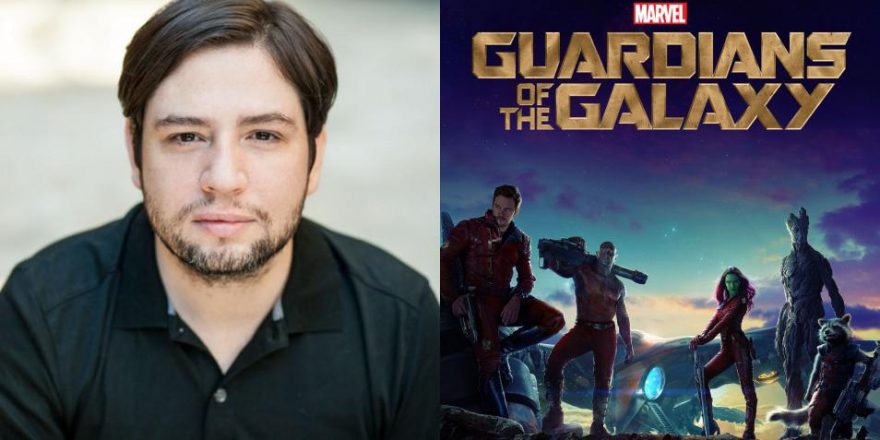A few months ago, a Blu-ray of the first season of The Flash landed on my doorstep without fanfare or preface. As a filmmaker who also writes about film and television for a handful of outlets, I often (though not as much as I would like!) get review copies, some of which I’ve sought out and some of which arrive unsolicited. The Flash was one of the latter, but I was excited to get my hands on it nevertheless. I don’t know exactly what I was expecting when I popped the first disc into my player to kill a little time, but I know what I wasn’t expecting: to be instantly engaged by a comic book show that restored and reinvigorated my faith in both television and comic book adaptations. Yet that’s what I got, and I got it before I was even done with the pilot – and the show just got better from there.
For the uninitiated among you, The Flash is an adaptation of a DC comic about a costumed crime fighter whose superpower is his ability to move insanely fast, so that everything around him looks slow or even stopped. The show gets a lot of mileage out of this premise in its action setpieces, which are both delirious and grounded – the style, established in the pilot by director David Nutter, is elegant in a way that action movies used to be before they got smothered in CGI. Not that there isn’t CGI in The Flash; there’s plenty, it’s just integrated into the story rather than slathered on top of it like an excess of mayonnaise on a sandwich. Nutter and the directors who have followed him on the series are terrific at laying out the ground rules for the characters’ superpowers (as the show develops, we learn the Flash is not alone in having an unusual gift) and then staging the action with clarity, precision and energy, so the viewer is consistently surprised yet never confused – it makes for action that is energizing rather than draining and exhausting, which is what I find most theatrical comic book movies to be.
Though I bow to no man in my love for Christopher Nolan’s The Dark Knight and The Dark Knight Rises, and find moments to admire and enjoy in some Marvel movies, more often than not I just find comic book films sluggish and oppressive – I don’t go into them with joy the way (I presume) most of the moviegoing public does. I go into something like The Avengers: Age of Ultron with dread, like it’s homework; I have to see it to be part of the culture, but I don’t expect to actually enjoy or even completely understand it. Almost every time I go see a comic book movie on the big screen, I’m reminded of Pauline Kael’s description of Spielberg’s 1941 as a movie that makes you feel like your head is stuck inside a giant pinball machine for two hours. Even when I like a comic book movie, like James Gunn’s Guardians of the Galaxy, I inevitably get a sinking feeling in the final act, when the CGI orgy kicks in and suffocates whatever humor and spirit had engaged me in the early stages of the film. It doesn’t help that, to my eyes, the CGI always looks essentially the same, like the visual effects houses have templates they use and don’t want to deviate from – and the sheer scale of these productions so buries the films’ directors in departments and multiple units and logistics that they can never really wrestle what they’re shooting (or being given in post) into any kind of personal vision. (Again, Nolan is an exception to this rule, and I have no idea how he pulls it off.)
The Flash is something different – it has a light touch, yet ironically has more emotional and thematic heft than its big-screen counterparts.The Flash is something different – it has a light touch, yet ironically has more emotional and thematic heft than its big-screen counterparts. After binge-watching the first season, I decided to catch up with the series The Flash was spun off from, another DC adaptation for the CW network called Arrow. Arrow’s imagery and content is slightly darker than that of The Flash, but it shares its progeny’s fully realized characters, expertly crafted action sequences and seamless integration of theme, character, color and digital effects to create a unique yet accessible cinematic world. While Nutter undoubtedly gets some of the credit for these shows’ visual distinction (he directed Arrow’s pilot too), it remains in episodes helmed by other directors of varying levels of skill and experience. The other thing that remains is an attention to character and performance that makes The Flash and Arrow every bit as emotionally satisfying as more critically acclaimed non-genre programming – and far more affecting than theatrical comic book stories such as the Iron Man movies, where “character” is little more than Robert Downey Jr. smirking his way through the few scenes where his stunt double and the digital suit aren’t doing the heavy lifting.
Now, I’ve never subscribed to the idea that filmmakers are better off with more limited resources – having done a couple low-budget features, my opinion is that people who say you’re somehow better off with less money and time because it forces you to “use your imagination” are just trying to put a positive spin on the brutal realities of independent filmmaking. Yet there’s no denying that the limitations of television – combined with the talents of the people behind Arrow, The Flash and now Supergirl – have led to an embarrassment of riches when it comes to the comic book genre. Those three shows are all produced under the aegis of producer Greg Berlanti (who also produces The Mysteries of Laura and Blindspot – does this guy ever sleep?) and collaborators like Ali Adler, Andrew Kreisberg and Marc Guggenheim, writer-producers who share Berlanti’s gift for flawlessly juggling action, drama and comedy. Without getting into that tired argument of whether or not TV is “better” than film, I’ll just say that Berlanti’s television shows offer different – and for me, deeper and more varied – pleasures than their cinematic counterparts.
Berlanti and his partners have taken the tighter schedules and smaller budgets of television and used them to their advantage, creating three series that deliver all the delights of big-screen comic book spectacles with virtually none of the drawbacks. In features, it often seems to me that scale trumps all other concerns; I don’t know whether it’s the studio executives, the producers, the directors, or a combination of all of the above, but the mandate on Marvel movies seems to be to spend as much as possible on special effects, whether or not they’re motivated by anything other than sheer spectacle. I like spectacle as much as the next guy when it’s real – or at least when a filmmaker is convincing me that it’s real – but when I sense that I’m just looking at millions of pixels masquerading as destroyed cities and fleeing extras, I go to sleep. On Berlanti’s shows, the effects are always there for a reason, because the economic realities of television prohibit any other approach. To my eye, the effects are often technically better than the more expensive corollary effects in features – maybe because the VFX artists are actually responding to something in the material as opposed to a meaningless “bigger is better” mentality. There don’t seem to be any corners being cut on the technical end on these shows in spite of the fact that I know the crews must be under insane time constraints, but there is a slightly stripped down quality to the effects that nicely complements the characters and relationships.
Under Berlanti’s guidance, those relationships can stand up to the scrutiny – unlike in many of the big-screen comic book movies, in which the filmmakers have to bombard the audience with visual and aural noise because they have nothing else to offer. Each of Berlanti’s three DC shows has a slightly different thematic focus, whether it’s family, class, and the tension between the needs of the individual and the needs of the community (Arrow), the desire to rewrite history and correct the past by changing the present (The Flash), or questions of what makes a true feminist and a true hero in millennial America (Supergirl). The ideas are meaty enough to drive dozens of hours of TV, and they’re expressed through characters who are impeccably cast across the board and made instantly relatable by both the specificity and the universal qualities of their emotional struggles. The amazing thing about all of these shows is that I would watch them even if they didn’t have superhero action – they work just as great dramedies, with wit, poignancy and charm.
Thus the starting point for Berlanti doesn’t seem all that different from when he was working on Everwood or Jack and Bobby, but his new shows are even better because they do add the mythic, larger-than-life component that comes with the territory when you’re adapting comic books. The sci-fi elements heighten the character stuff and vice versa, and it’s all presented with a palette far more dynamic than what I’ve seen in any big-screen comic book film of recent years. For whatever reason, theatrical comic book adaptations seem to see color as the enemy – I guess it’s supposed to be “art” if everyone looks like they just rolled around in a pile of ashtrays. While Arrow has tendencies toward this desaturated aesthetic in a way that makes sense given its slightly bleaker world view, The Flash and Supergirl (whose pilot was directed by Glen Winter) are pure eye candy, explosions of vivid, pleasing colors that invite – and earn – comparison with Joe Dante at his best. (Maybe now that Dante is directing TV, Berlanti can get him to take on an episode of Supergirl.) It’s rare to find this kind of perfect synthesis of all the visual, dramatic, and social and cultural satisfactions that movies and TV have to offer – at least it used to be. Thanks to the creators of Arrow, The Flash and Supergirl, you can actually get it three times a week.


